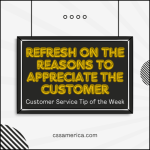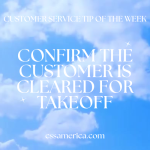
The rising tide lifts all boats. I’m not sure who coined the phrase, but it fits into our workplace just as much as the high seas.
When I wrote the tip about motivating yourself by writing down your daily successes, a reader commented that it would be great to have a team meeting with other customer service staff each morning, and then have staff share one of their success stories from the prior day.
At face value, it sounded like a good idea, and as I thought about the concept and responded to the reader, it began to sound better and better.
Think about having a daily meeting that was simply “5 minutes of positives.” What would it do for you, your teammates, your staff? You could quickly see what one person did great, and pat them on the back. You could learn about how one person handled a tough situation effectively. You could feel good for others and enjoy the recognition when they celebrate your success. You could have a picture of success painted for you every day, creating a consistent focus among teammates on great customer service, and reinforcing what a great job others are doing.
This is about starting your day with 5 minutes of positive energy. This is about not just you or your customer; it’s about your team. It’s about the quality of the workplace continuously improving – creating a rising tide of positives and successes that lifts everyone.
Being intentional about having “5 minutes of positives” can be big in a team developing a common focus on customer service and more confidence in what they do.
Help the tide of your team to rise with 5 minutes of positives.























